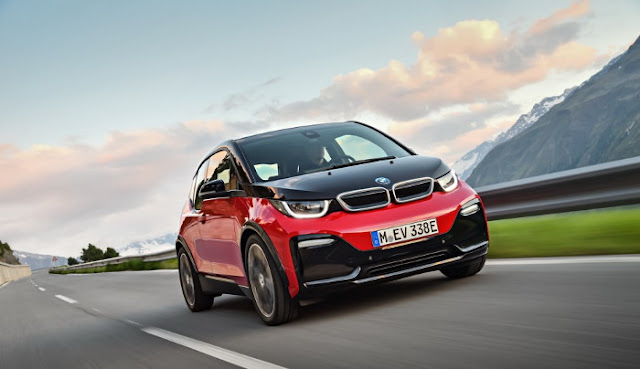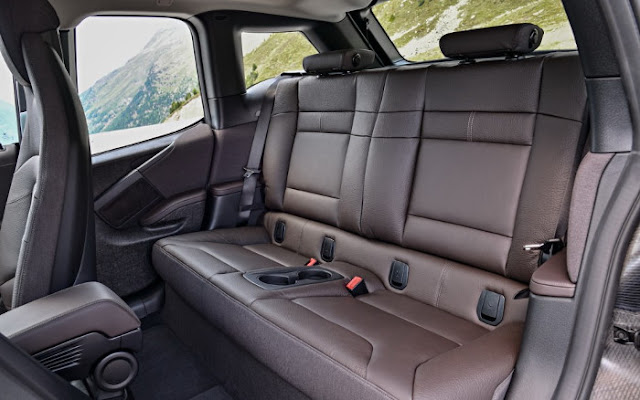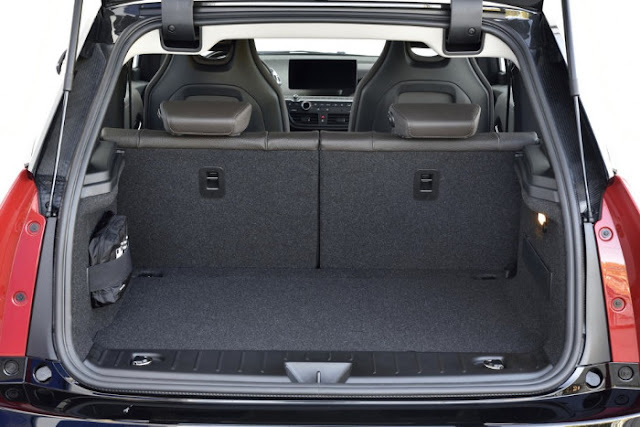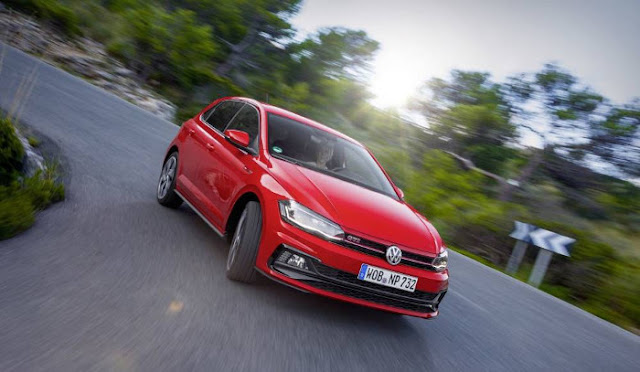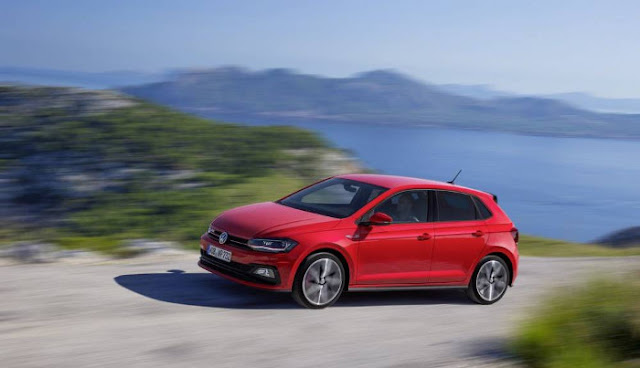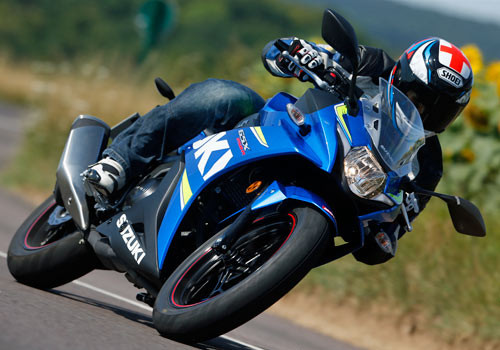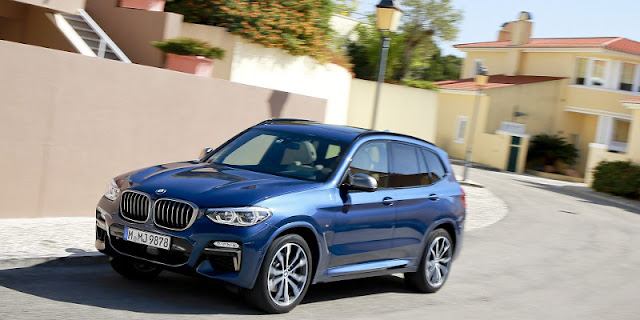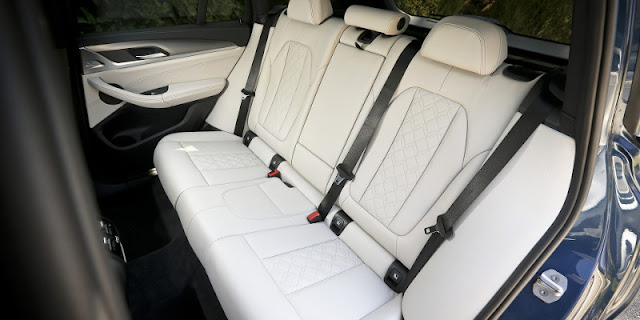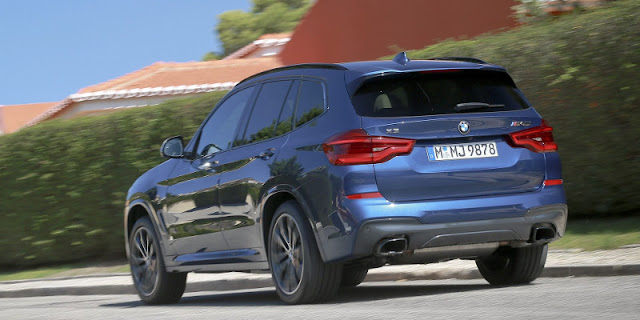Ducati 1299 Panigale R. A sequence of emotion! Before taking the handlebars of the V4 next week, let's close the magnificent story of Ducati twins superbike with the test of the last of its kind, the 1299 Panigale R Final Edition. The moment is historic. In 2018, the first 4-cylinder Ducati Superbike will put an end to one of the most beautiful sagas of the bike. Relegated to the rank of emotional memories, the desmodromic twins will obviously continue to live on the other models of the range but will no longer animate the jewels of the brand. Next week, we will discover the magnitude of this revolution on the handlebars of the Panigale V4, a surge of sensations still unknown so far. But now, the time is goodbye, the last of a line illustrious We are waiting for his test on the station.
Braced in box number 15, the Ducati 1299 Panigale R Final Edition hands us its most beautiful rear three-quarter with, in the foreground, its double exit Akrapovic grid WSBK way. Bruno (our photographer) tries to make a remark, tries to put a qualifier on the stage, except that his denture begins to stammer, hatching his best thoughts. I do not understand the meaning of the sounds coming out of my favorite little man but I understand the content: "Well yeah old, you're like me, taped, almost stunned by the diva who stands there. He unpacked in an excitement barely contained his flashes and his objectives, I put on my leather cracked. Bruno points to the sun and throws his chin towards the track. Literally, it means that he judges the perfect light and it is time that I accompany the supermodel on his parade place.
Hypersportive engaged
Two new Pirelli Supercorsa tires, no heat blankets but a largely conciliatory ambient temperature and track allow a serene approach. The beauty starts in a momentum of relatively contained decibels. Pushpin, the way WSBK way suggested stronger than that but it was forget a little faster punch Euro 4 she sports. It should be able to blow these pesky dbkillers hidden behind grids but with only a jack available in the rental car, that's for sure, we would leave ugly marks on the beautiful titanium envelope then no, not touch.
Panigale is a committed sportsman and the position it imposes on its driver leaves no doubt about it. At least, it envelops the cockpit well with the feeling of domination that goes with it. The mechanics are noisy but that, we know. The extraction of the box n° 15 is in the softness with this clutch certainly a manly hair but perfectly dosable and progressive. Immediately and while the decor of the Ricard still scrolls at a very small pace, accuracy and ease of placement is already manifest despite the tires still "cold". We start instinctively by pressing the braking line and put the load on the back, motorcycle straight. The gum rising in temperature, the test will be able to take the thickness, the photographer, images.
A world of sweetness?
The instructions for use of a large Ducati sports twin engine remain very specific, with all the commitment it requires. Some love, others hate. But in this regard, what do they hate in the operation of a big twin like this one? Well, if they were lucky enough to be able to taste this definition, they would probably revise their judgment. Because the features of this "R" engine to the seriously lightened moving crew make him a much sweeter student than anything they can know about this architecture. It is felt in turn entry with this engine brake that is discreet, allowing to play the downshift without restraint, without fear of suffering excessive movement from behind. Of course, the electronics also play its role here but the reduced inertia of this engine extends its benefits until the inscription, while facilitating the changes of angle and softening the phase of recovery of the gases.
In the same vein, there is a drop in requirement for footrest supports in fast baffles. The bike is really lively and does not seem to mark a timeout at the tipping point, even with a lot of engine speed. And since it is less violent the machine, it is the overall sweetness that is harvested. Meanwhile, Bruno puts a few clicks here and there on his Canon case. And go on that I open the diaphragm, that I reduce the shutter speed, etc. He smiles, it's a good sign. On the other hand, I feel that I lack grip behind. My turn to fiddle with the palette of settings proposed by my toy of the day. Clearly, the rear is too hard, imposing too much stress on the tire without being able to stall it early enough. By slightly opening the hydraulic compression, here I find comfort and traction but it should be able to pass a less hard spring. Oh, it's easier to switch from one lens to another on a SLR camera than to replace the spring of the combined Öhlins TTX 36. Especially when one is equipped only with a car jack...
A frank... very frank push
And this Superquadro then? 209.4 horsepower, 14.5 mkg, the spec sheet suggests that it has in the casings, the reality approves. Oh yes it works! And if you actually see the restraint imposed by the homologated line in the raises at the bottom and mid-regimes, up there, it pedal! As usual, the Superquadro block shows the best of itself after 8000 rpm. A course that does not go unnoticed at the controls as it comes with a frank, very frank push. However, if on board the first generations of Panigale 1199 this occurred in a certain savagery, from now on, the punch explosion is otherwise better channeled.
Geometry reconsidered, refined electronics, we do not eat the top triple fork in the chin of the helmet and that is really appreciated. The enormous thrust of 9,000 to 11,000 rpm is finally interrupted by the breaker around 11,300 rpm. In the long and long accelerations experienced in the high-speed parts of Paul-Ricard, the quickshifter makes it possible to chain the rise of the reports in an optimal way. An impulse around 11000 rpm and the higher gear also plunges us back into the zone of maximum force. At the exit of the right of the Sainte-Baume, one passes already the four, swallowing the left commanding the straight line of the Mistral at nearly 200 km / h, full angle and high in the towers.
"It's going to be chipping!"
In front, the straight of the Mistral which takes place on 1.8 km of macadam stands ready to receive a long and powerful desmodromic salvo. Even before the passage of the Pinewood, synonymous with connection between the 3.8 km and 5.8 km, the sixth report is already well locked and coriellement loaded by the 1285 cm3 launched full ball. Shortly before 11,000 rpm, as the North baffle is approaching, the digital speedometer stops galloping so as to display only three small points. I would never see the number 300 in the tachometer window. (gentleman agreement between manufacturers requires), while the tachometer continues its run up to about 11,200 rpm. Which, in maximum theoretical speed, should give us... Hmmmm ... Knowing that I am thoroughly for several seconds, that the engine is close to its maximum speed, that the last gear retransmission primary is 23/24, the final gear in 15 x 39, the Pirelli Supercorsa displays a dimension of 200/55 x 17, etc. Uh ...
There my coconut, if you do not catch the brakes illico presto, it's likely to make chips! Ouch! What a mordant! Two fingers on the lever and a force measured on the lever are enough to provoke a frank and powerful attack. The dive is perfectly channeled, the deceleration is clear and reassuring, even if it is not at the entrance to Signs that we measure the true strength of the Brembo ensemble, since at this place, we keep a lot of speed with a ropeway at around 190 km / h. In this area, it is better not to blink too long. The bike is very instinctive, is placed very precisely, displays a good stability in this difficult passage and without expanding the output when you put gas thoroughly. This front is decidedly sharp, one would swear to be dealing with a running gear of 600 in the pognes.
"A 600 cm3 that I tell you!"
On big, very big braking, we take advantage of the best provisions of Brembo material. Big biting therefore, and especially, perfect progressivity as much in the rise in pressure as in the degressive phase. Attack hard to transfer the load forces to the front and then re-open the hand gradually but without waiting for a smooth and fast degressive phase. The motorcycle encourages to return always faster since it turns short, never having a tendency to want to widen at the release of brake, not more than at go-around. A 600 cm3 that I tell you! It feels to put the net back very early, the neutral phase being only very brief.
In very tight sectors, we would not be against more gnac soon after the motorcycle straightened but for that, it would be necessary to blow up this flange Euro 4. And Bruno? Where did Bruno go? The time has gone so fast, already 150 km from Ricard shipped since this morning, it will be time to bring the dancer in the box No. 15. Ah, this is my Bruno! This small bending of the knees with the bust that goes back a little twitch, OK, I got it, the code is clear, we end the photo shoot with a peckish attitude and wheeling. Sacred code, sacred Bruno, sacred circuit and above all, sacred bike.
Ducati Panigale Review 1299 R Final Edition
If technically speaking the Panigale 1299 R Final Edition ultimately only a relative interest compared to the Panigale 1199 R, it is instead the irreplaceable title of "Last of the Last", a sort of collector power. An exceptional part requiring a surplus of 6,645 €, the 1199 R being proposed at the price of 33 255 € (at 15/01/18). The question is what future attention will be given (or not) to the worshipers of big twin hypersports? Should they be satisfied with this: "When the end tells the whole story"? The Panigale 1299 R Final Edition being numbered but not limited, we can imagine seeing it rubbing the Desmosedici V4 Stradale for a while, but after? By Bertrand Gold, pictures Bruno Sellier (Moto Revue) and manufacturer.
Ducati 1299 Panigale R Final Edition:
Ducati Panigale 1299 R Final Edition, practice
Price: from 39 900 € (at 15/01/18)
Color: red / white / green
Warranty: 2 years, parts and labor, unlimited mileage
Homologation: Euro 4
Availability: Since July 2017
Technical sheet
Engine: 1,285cc, 4-stroke, 90 ° open twin-cylinder, 116mm bore x 60.8mm stroke, water cooled, desmodromic 2-ACT and 4-hp, electronic fuel injection, 6-speed with Ducati Quick Shifter up and down, Ride by Wire throttle, electric starter, chain transmission 209 hp. (154 kW) at 11,000 rpm, torque 14.2 daNm at 9000 rpm
Part-cycle: aluminum monocoque frame, inverted fork Ohlins NIX30 diam. 43 mm, deb. 120 mm; mono-damper AR Ohlins TTX36, deb. 130 mm; fully adjustable suspensions; front brakes 2 discs diam. 330 mm semi floating / monobloc radial callipers 4 pistons M50 - AR disc diam. 245 mm / 2 piston caliper, ABS standard; front tires 120 / 70ZR17 - AR 200 / 55ZR17
Template: wheelbase 1,443 mm, hunt 96 mm / angle 24 °, seat height 830 mm, tank 17 l., Dry weight (factory) 163 kg / 190 kg all full facts
Performance: + 300 km / h
Part-cycle: aluminum monocoque frame, inverted fork Ohlins NIX30 diam. 43 mm, deb. 120 mm; mono-damper AR Ohlins TTX36, deb. 130 mm; fully adjustable suspensions; front brakes 2 discs diam. 330 mm semi floating / monobloc radial callipers 4 pistons M50 - AR disc diam. 245 mm / 2 piston caliper, ABS standard; front tires 120 / 70ZR17 - AR 200 / 55ZR17
Template: wheelbase 1,443 mm, hunt 96 mm / angle 24 °, seat height 830 mm, tank 17 l., Dry weight (factory) 163 kg / 190 kg all full facts
Performance: + 300 km / h








